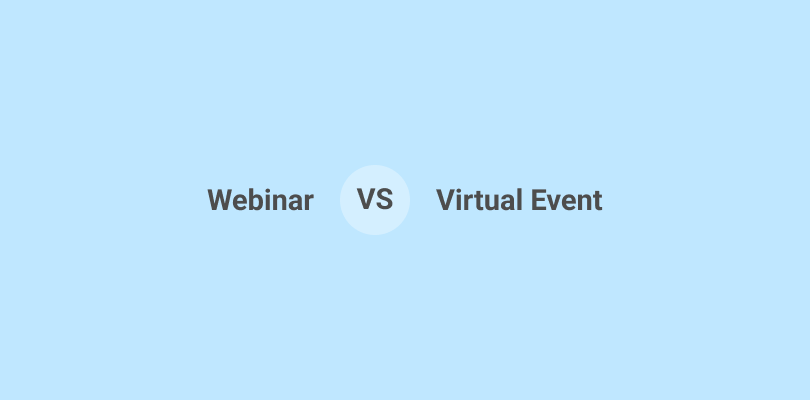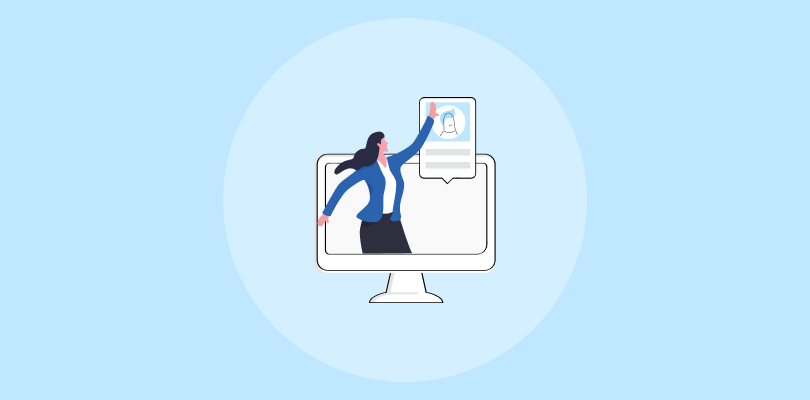Do you know what serves as a bridge between your webinar efforts and returns?
It’s a creative, well-crafted, and on-point webinar CTA (call to action)!
But only if you could magically control the fingers of all your attendees and make them click that CTA button after a session.
Don’t worry. Now, you can do it easily (without any magic tricks).
With years of experience in the webinar industry, I have created a detailed guide with examples of how to use webinar CTAs effectively to get better returns on your efforts.
Let’s dive right in.
What is a Webinar CTA?
A webinar CTA (call to action) is a prompt that encourages attendees to take a specific action after you host a webinar, like signing up for a service, downloading a resource, or booking a consultation.
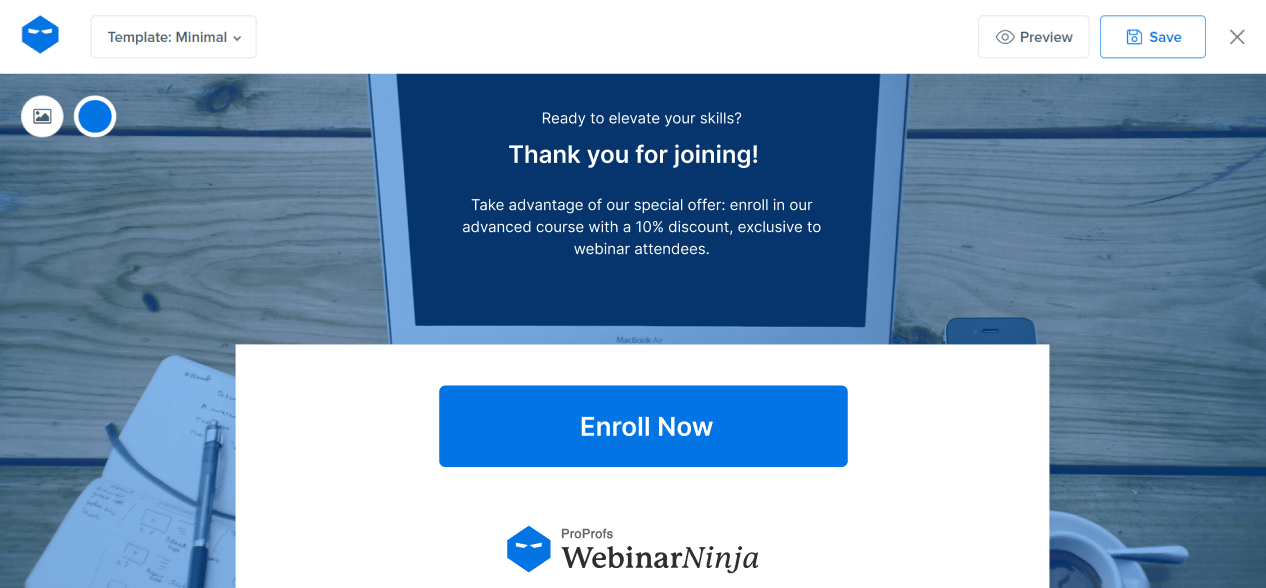
The CTA is usually included at the end of the webinar to guide participants toward the next step.
Example:
During a marketing webinar, the host might say, “If you want to improve your email campaigns, click the link below to download our free guide on email marketing strategies.”
This simple CTA helps participants continue learning and engage with the brand further.
Why Are Webinar CTAs Important?
Studies suggest that a specific, clear CTA can increase conversion rates by 161%.
No doubt, CTAs in webinars are essential because they guide your audience toward the next step, making them more effective. Without a clear CTA, attendees may leave without engaging further, missing the opportunity for deeper interaction.
Here are key reasons why CTAs are important:
- Encourage Engagement:
They prompt your audience to take immediate action, such as signing up for another webinar, downloading a resource, or starting a free trial.
- Boost Conversion Rates:
Well-placed CTAs help convert webinar attendees into leads or customers by offering relevant follow-up actions aligned with their interests.
- Measure Audience Interest:
Tracking which CTAs are clicked helps you understand what resonates with your audience and tailor future webinars accordingly.
- Drive Post-Webinar Interaction:
CTAs continue the conversation after the webinar ends, whether through social media engagement, surveys, or further content consumption.
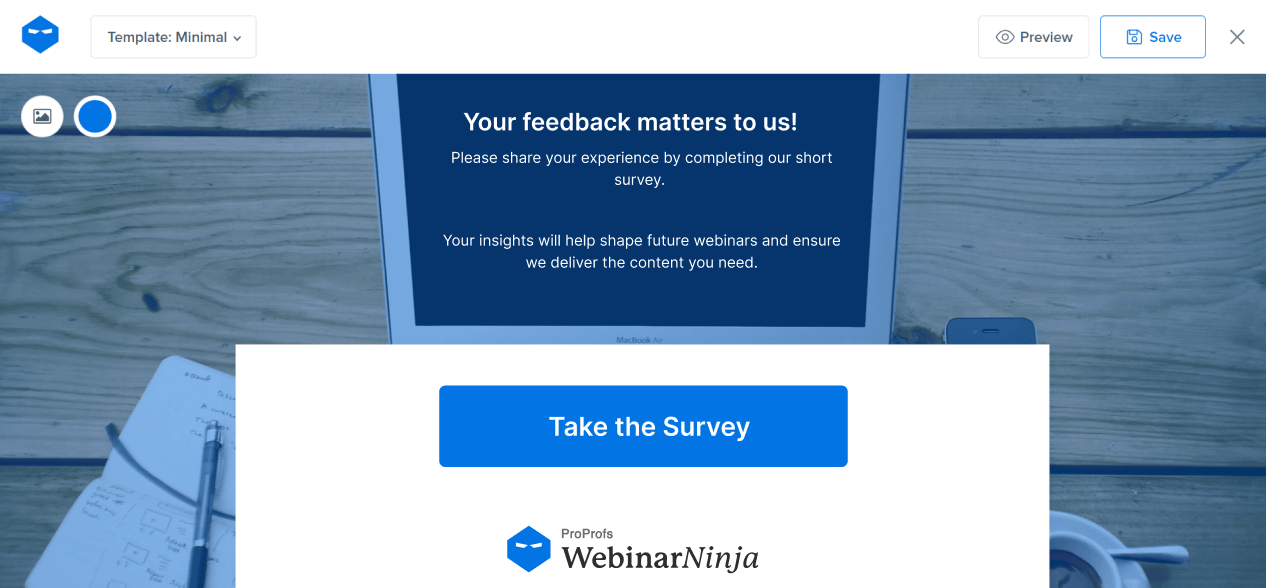
What Are the Types of Webinar CTAs?
You can use webinar CTAs to drive engagement and conversions and guide attendees toward a desired outcome. Depending on your goal, different types of CTAs can be used. Here are some common types, along with webinar CTA examples:
1. Register for a Product Demo
This CTA invites attendees to see your product in action, allowing them to experience firsthand how it can solve their problems and meet their specific needs.
Example CTA: “Schedule a Free Product Demo Now.”
2. Download a Resource
Encourage attendees to continue learning or solving their pain points by offering valuable downloadable handouts, such as an eBook, whitepaper, or guide, in exchange for their engagement.
Example CTA: “Download Your Free eBook Here.”
3. Sign Up for a Newsletter
Encourage attendees to subscribe to your email newsletter and provide them with regular content, tips, or industry insights to help foster long-term communication and relationship-building.
Example CTA: “Join Our Newsletter for Exclusive Content.”
4. Start a Free Trial
Offer attendees a limited-time trial to encourage them to explore your product or service risk-free and experience its benefits before making a purchase decision.
Example CTA: “Get Started with a 30-Day Free Trial.”
5. Request a Consultation
Offer personalized assistance by encouraging attendees to request a one-on-one consultation, which allows you to address their unique challenges and provide tailored solutions.
Example CTA: “Book a Free Consultation with Our Experts.”
6. Take a Survey or Poll
Collect valuable feedback from your audience by encouraging them to complete a short survey or participate in a poll, helping you better understand their preferences and needs.
Example CTA: “Complete Our Post-Webinar Survey for a Chance to Win!”
7. Purchase a Product
For a more direct approach, prompt attendees to make a purchase immediately after the webinar, especially if your product solves a problem or satisfies a pressing need.
Example CTA: “Buy Now and Get 10% Off!”
8. Join a Course or Program
Encourage attendees to deepen their knowledge and continue their learning journey by enrolling in a paid course, program, or training that complements the webinar topic.
Example CTA: “Enroll in Our Advanced Training Program.”
9. Follow on Social Media
Strengthen your connection with attendees by encouraging them to follow your brand on social media, where they can receive ongoing updates, tips, and news about your product or industry.
Example CTA: “Follow Us on Instagram for More Tips!”
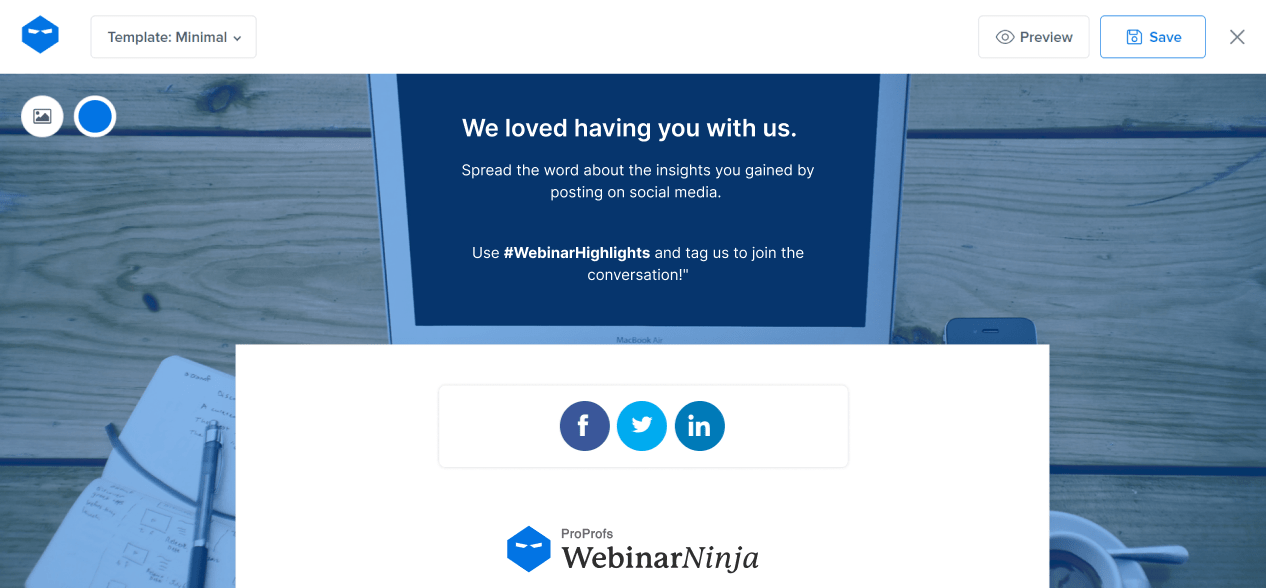
10. Share the Webinar
Increase the reach of your webinar by prompting attendees to share the recording or content with colleagues, friends, or their network, expanding your audience beyond live attendees.
Example CTA: “Share This Webinar with Your Colleagues!”
11. Access Webinar Replay
Allow those who couldn’t attend or want to revisit the content to watch the recorded webinar at their convenience, ensuring they don’t miss out on the valuable insights shared.
Example CTA: “Watch the Webinar Replay Anytime.”
12. Join a Community or Forum
Foster ongoing engagement and build a sense of belonging by inviting attendees to join an exclusive community or forum to continue discussions, share ideas, and network.
Example CTA: “Join Our Exclusive Forum to Continue the Discussion.”
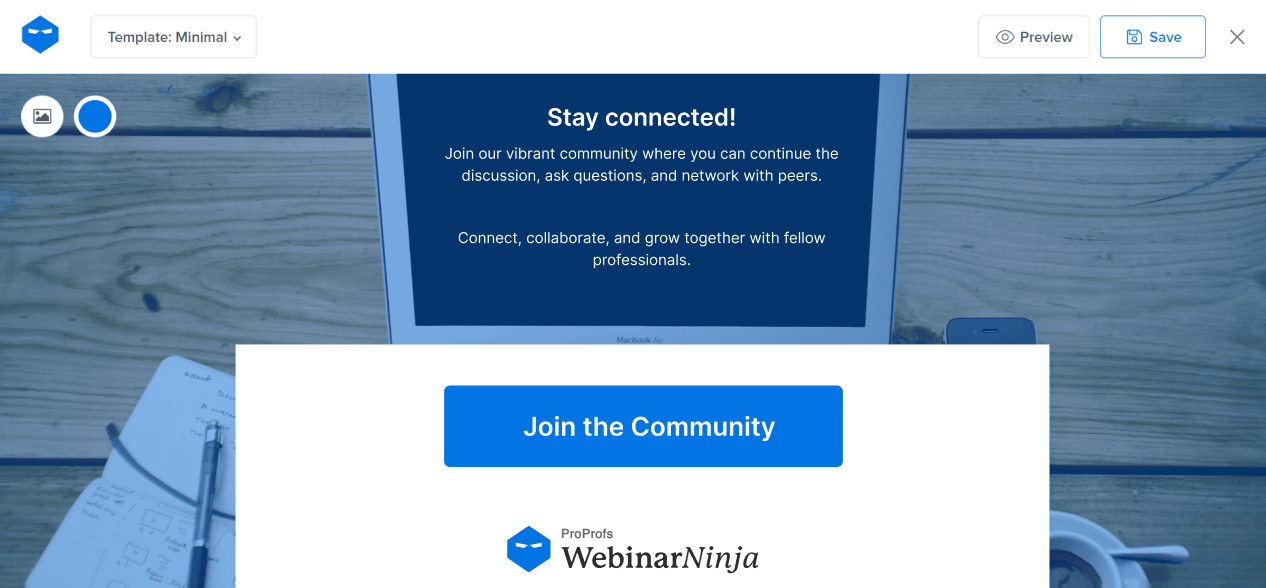
13. Refer a Friend
Use the power of word-of-mouth marketing by encouraging attendees to refer friends or colleagues and rewarding them with incentives for bringing in new potential customers or attendees.
Example CTA: “Refer a Friend and Earn Rewards.”
How to Effectively Use CTAs at Every Stage of Your Webinar Funnel
Effectively using calls to action at every stage of your webinar funnel can dramatically improve your conversion rates.
Here’s how you can tailor CTAs at each stage, ensuring that they engage your audience and guide them seamlessly through the journey:
1. Pre-Webinar (Awareness and Registration Stage)
At this stage, you aim to attract potential attendees and get them to sign up for the webinar. CTAs here should focus on building interest and driving registrations.
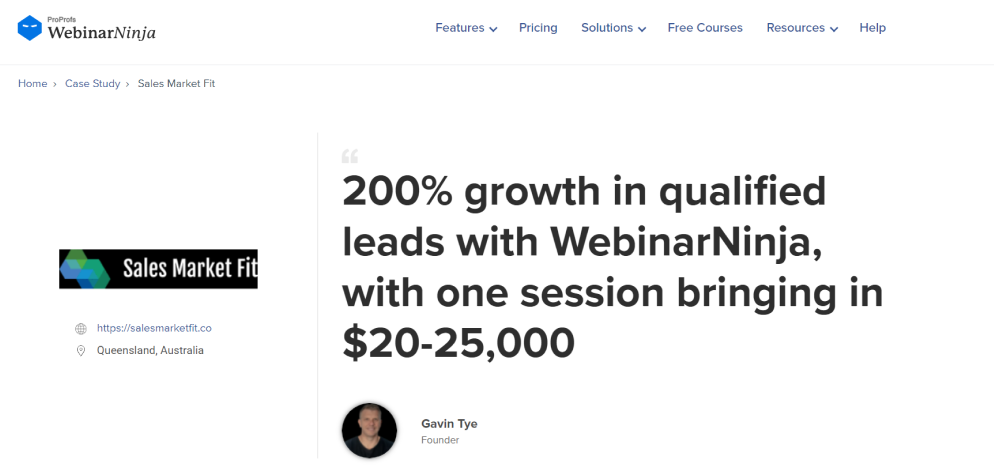
CTA Examples:
- “Save Your Spot”: Emphasizes scarcity and urgency.
- “Register for Free”: Clearly communicates the benefit of the webinar and eliminates any price-related objections.
- “Join Us to Learn [Specific Benefit]”: Highlight the value proposition, giving a clear reason to register.
Pre-Webinar CTA Tips:
- Use strong, action-oriented language like “Save,” “Claim,” or “Get.”
- Create urgency by mentioning deadlines or limited availability.
- Offer incentives (like free eBooks or access to exclusive content) as a lead magnet for signing up.
- Place CTAs prominently on landing pages, email campaigns, and social media posts.
2. During the Webinar (Engagement Stage)
While the webinar is ongoing, your CTAs should aim to deepen engagement and lead your audience toward your primary goal, whether it’s purchasing a product, subscribing to a service, or booking a demo.
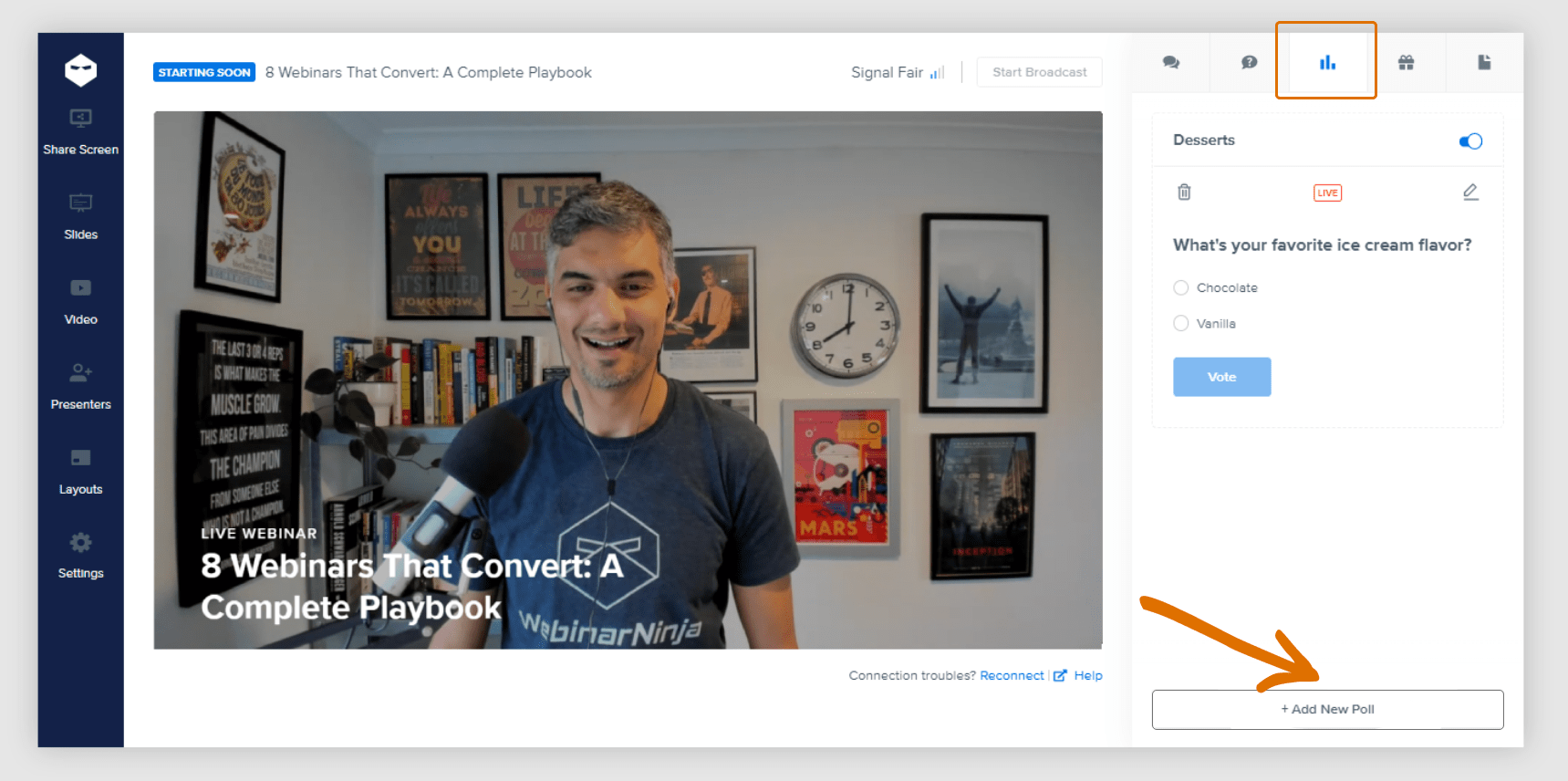
CTA Examples:
- “Download the Presentation”: A simple CTA to keep participants engaged and provide value during the event.
- “Get a Free Consultation”: Encourage participants to take the next step during Q&A or relevant parts of the webinar.
- “Upgrade to Premium for Exclusive Access”: If you’re selling a product, this CTA can be subtly placed while demonstrating features or benefits.
During-the-Webinar CTA Tips:
- Time your CTAs according to the webinar’s flow. For example, after an important insight, offer a related resource.
- Include a CTA in your slides as well as verbally to reinforce the message.
- Use engagement tools (like polls or live chat) to lead to a CTA during interactive segments naturally.
- Make CTAs easy to access by placing them in the webinar chat or pop-ups.
3. Post-Webinar (Follow-Up and Conversion Stage)
After the webinar, it’s crucial to capitalize on the momentum and nurture the leads you’ve captured. Your post-webinar CTAs should push for a conversion and keep the conversation going.
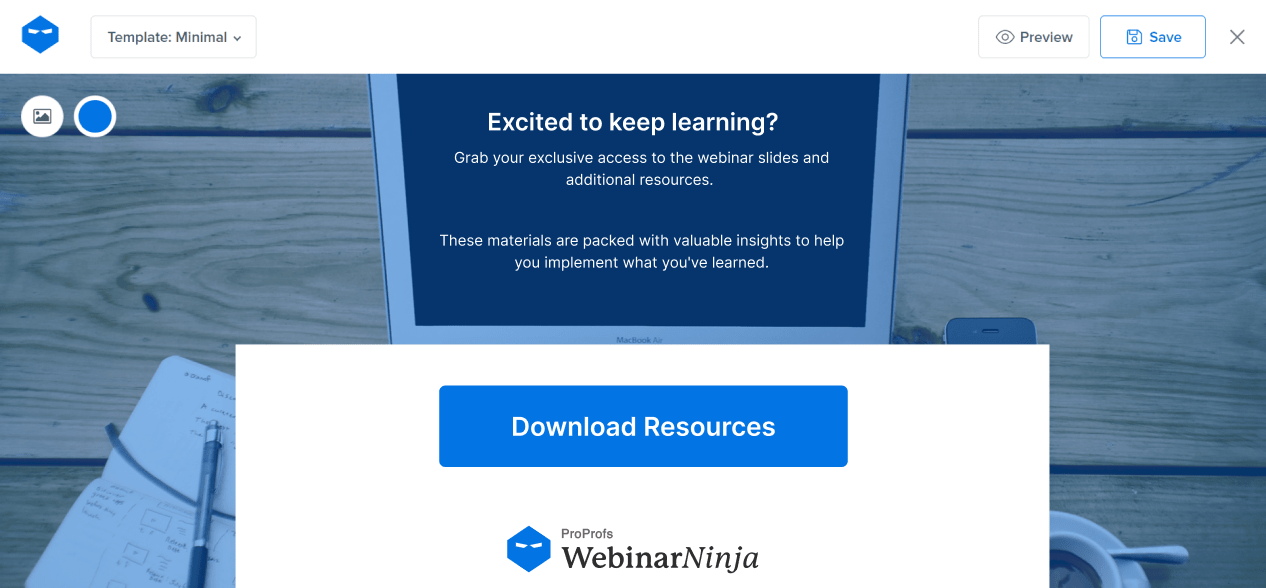
CTA Examples:
- “Watch the Replay”: For attendees who missed the live session or want to review important sections.
- “Claim Your Offer Now”: If you introduced an exclusive offer during the webinar, remind them of it in follow-up emails.
- “Schedule a Demo”: For those who are interested but need more personalized interaction to make a decision.
- “Share Your Thoughts and Win a Gift”: Engage attendees to leave feedback and reviews.
Post-Webinar CTA Tips:
- Send personalized follow-up emails with strong CTAs based on attendee behavior (e.g., those who stayed till the end vs. those who dropped off early).
- Include limited-time offers or discounts to create urgency.
- If they haven’t already, encourage attendees to take a step toward your primary conversion goal.
4. Long-Term (Nurturing Leads Stage)
Not every attendee will convert immediately, so it’s important to have long-term nurturing CTAs to keep leads engaged and eventually bring them back to convert.
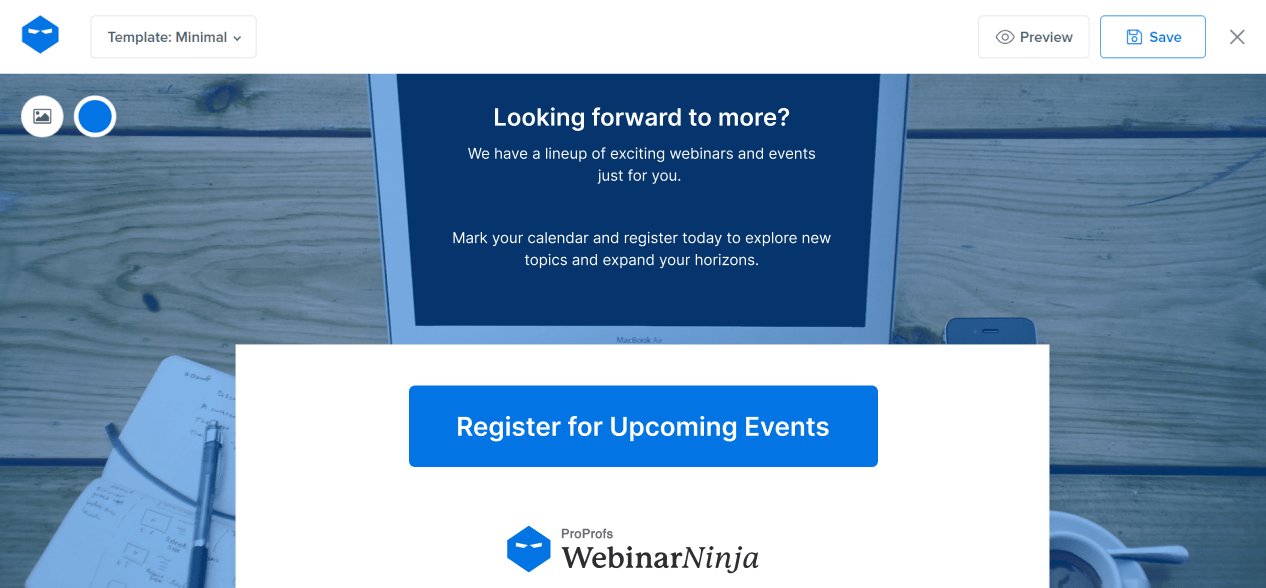
CTA Examples:
- “Subscribe to Our Blog”: Engage your webinar attendees with more relevant content.
- “Join Our Next Webinar”: Nurture leads with future events that might align with their interests.
- “Download Our Free Guide”: Provide more value with additional resources, keeping them engaged with your brand.
Long-Term CTA Tips:
- Nurture leads via a drip email campaign, offering more valuable content with actionable CTAs.
- Use retargeting ads with specific CTAs based on where attendees dropped off or what they expressed interest in.
How to Create High-Converting Webinar CTAs
High-converting webinar CTAs need to be persuasive, clear, and actionable prompts that encourage your audience to take specific action.
Here’s a guide to help you design effective CTAs for webinars:
1. Be Clear and Specific
A good CTA must be straightforward and convey exactly what the audience will gain. Avoid vague language. Tell them exactly what you want them to do and why they should do it.
Examples:
- “Register for Free Now!”
- “Save Your Seat for the Webinar!”
- “Get Access to Exclusive Content!”
2. Highlight the Benefit
Make sure your CTA communicates the key benefit of attending the webinar. What’s in it for them? This can include exclusive insights, valuable information, or practical solutions.
Examples:
- “Learn the 5 Proven Strategies for Growing Your Business—Sign Up Now!”
- “Join Our Free Webinar to Discover Expert Marketing Tips!”
- “Unlock Expert Secrets to Boost Your Sales—Register Today!”
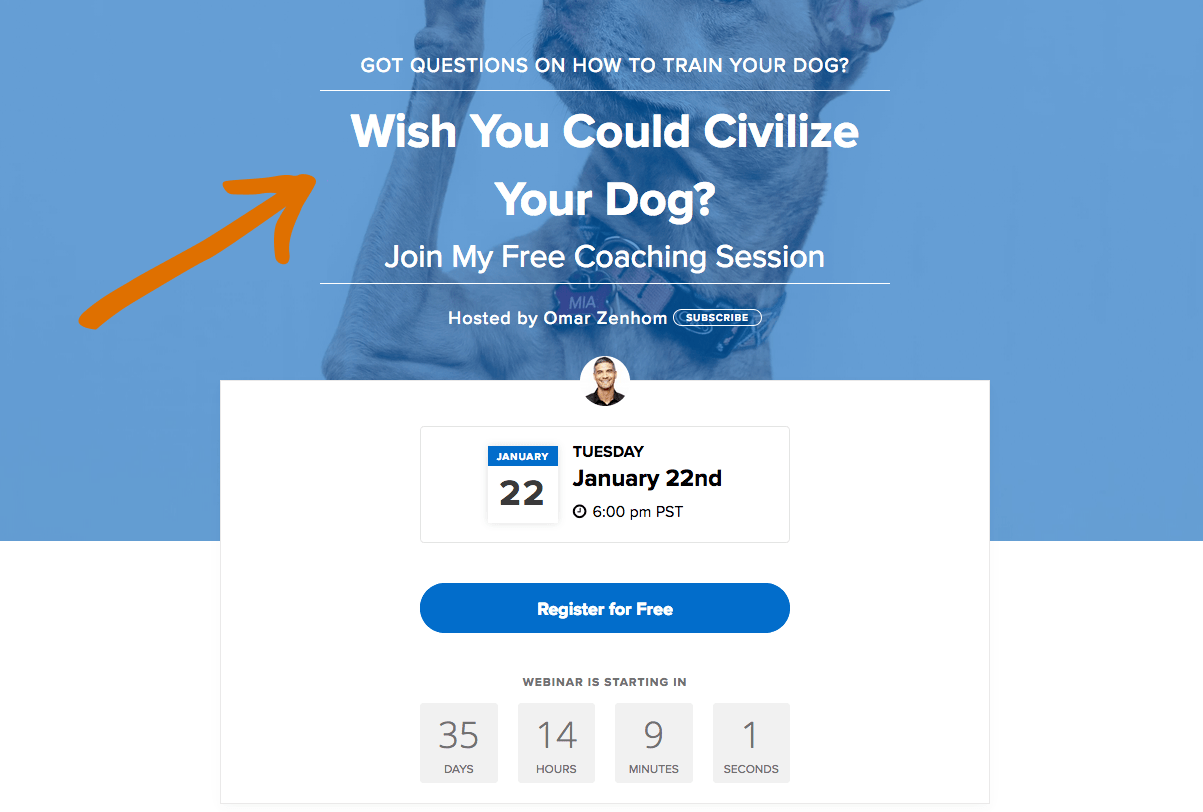
3. Use Action-Oriented Language
Use strong, action-oriented verbs to create a sense of urgency and compel the user to act. Words like “Join,” “Register,” “Claim,” “Download,” or “Access” are great for driving action.
Examples:
- “Join Now for Instant Access!”
- “Register Today and Don’t Miss Out!”
- “Claim Your Spot Before It’s Gone!”
4. Create a Sense of Urgency
Add urgency to encourage immediate action. This can be done by emphasizing limited availability or time-sensitive offers.
Examples:
- “Only 50 Spots Available—Register Now!”
- “Last Chance! Sign Up Before We Fill Up!”
- “Hurry, Registration Closes Tomorrow!”
5. Make It Visually Appealing
Use contrasting colors, bold fonts, and clean design to make your CTA stand out on the page. The button should grab attention without being too aggressive. Ensure it’s mobile-friendly, as many attendees may register on their phones.
Tips to Make Your CTAs Appealing:
- Choose colors that contrast with your page but align with your brand.
- Use ample white space around the CTA button to make it more prominent.
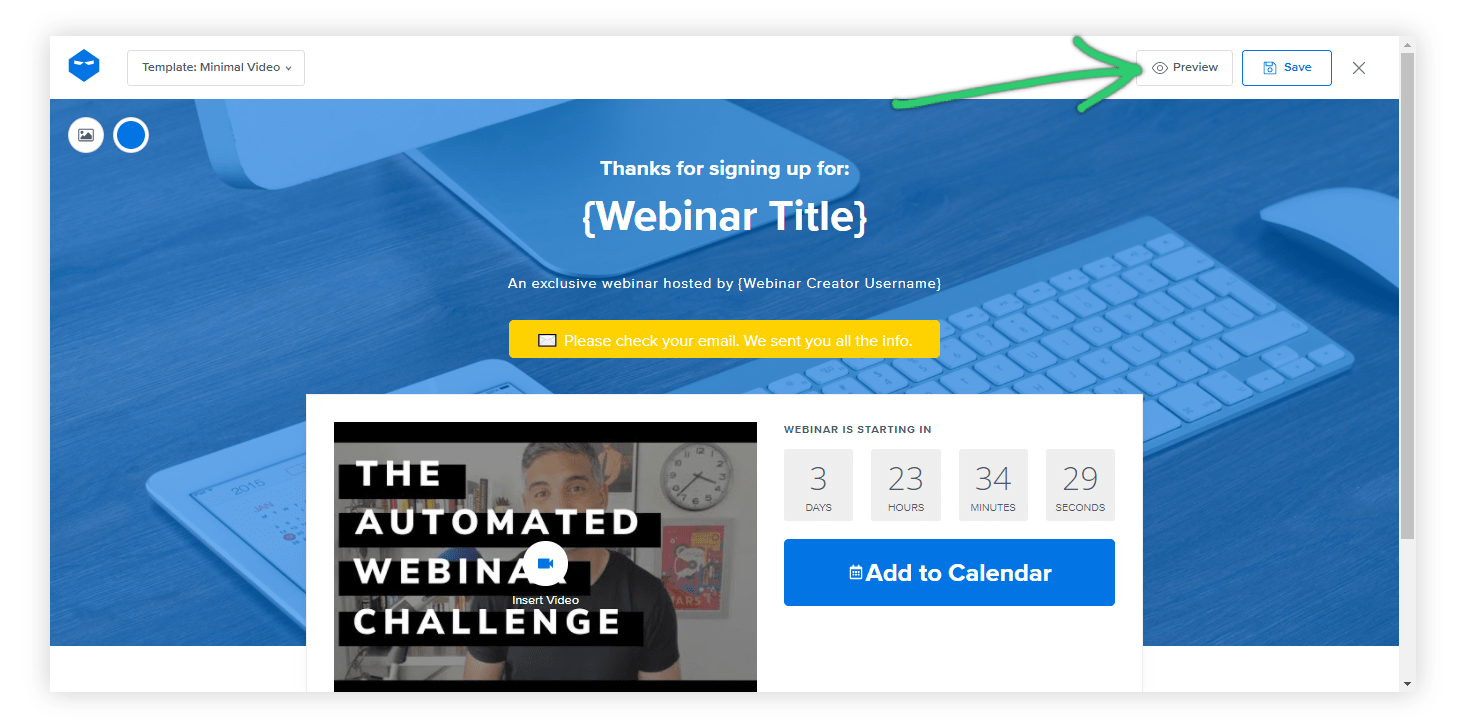
6. Place CTAs Strategically
Position your CTA where it’s easy for your audience to notice. Common spots include at the end of a landing page, within an email invitation, or on a pop-up window during the webinar itself.
Tips to Place Your CTAs:
- Add a CTA above the fold (before scrolling is required).
- Include multiple CTAs throughout your page (without overwhelming the audience).
- Use exit-intent pop-ups with CTAs when users try to leave the page.
7. Make the Process Easy
The registration process after clicking the CTA should be simple and seamless. If it’s too complicated or time-consuming, you risk losing conversions.
Tips to Facilitate Registration:
- Use a short, easy-to-complete form (name, email, and maybe one qualifying question).
- Ensure the form works smoothly across devices.
- Consider allowing social media sign-ups for one-click registration.
8. Include Social Proof
Incorporate testimonials, case studies, or quotes from past webinar attendees to boost credibility and trust in your CTA.
Examples:
- “Join 1,000+ Marketers Who Have Already Benefited!”
- “Over 95% of Attendees Recommend This Webinar—Register Now!”
9. Leverage FOMO (Fear of Missing Out)
Adding an element of exclusivity or time limitation can drive more people to act quickly.
Examples:
- “Only 20 Seats Left—Don’t Miss Out!”
- “Exclusive Access—Available for a Limited Time!”
- “Sign Up Before It’s Too Late!”
10. Test and Optimize
Run A/B tests to find the best-performing CTA. Test different text, colors, placement, and button designs to see which version converts the best.
Metrics to Track:
- Click-through rate (CTR)
- Conversion rate (registrations)
- Bounce rate on the webinar landing page
How to Track CTA Effectiveness in Webinars
To track the effectiveness of your CTA, it’s essential to understand how well your audience engages with your desired actions, whether they’re signing up for a service, downloading a resource, or scheduling a demo.
Here’s a step-by-step approach to effectively track and evaluate CTA performance during webinars:
1. Clear Definition of CTA Goals
Ensure the CTA is clear, actionable, and aligned with your webinar goals. For instance, do you want people to download a whitepaper, sign up for a trial, or request a consultation?
2. Use of CTA Links with Tracking
- UTM Parameters: Add UTM parameters to the URLs used in your CTA buttons or links to track the traffic generated from specific CTAs in the webinar. This allows you to measure the exact number of clicks and source of traffic using tools like Google Analytics.
For example, A link to a trial page could look like this:
www.yoursite.com/trial?utm_source=webinar&utm_medium=cta&utm_campaign=oct-webinar
- Shortened URLs: Use tools like Bitly or Rebrandly to create shortened, trackable links. These tools provide click-through data, showing how many users clicked on the CTA.
3. On-Demand vs. Live Webinar Tracking
- Live Tracking: For live webinars, track how many users clicked the CTA during the event. This can be done through webinar platforms or analytics tools integrated into your event software.
- On-Demand Tracking: On-demand webinars typically generate engagement over time. Track the CTA clicks over the course of days or weeks after the live event using your tracking URLs.
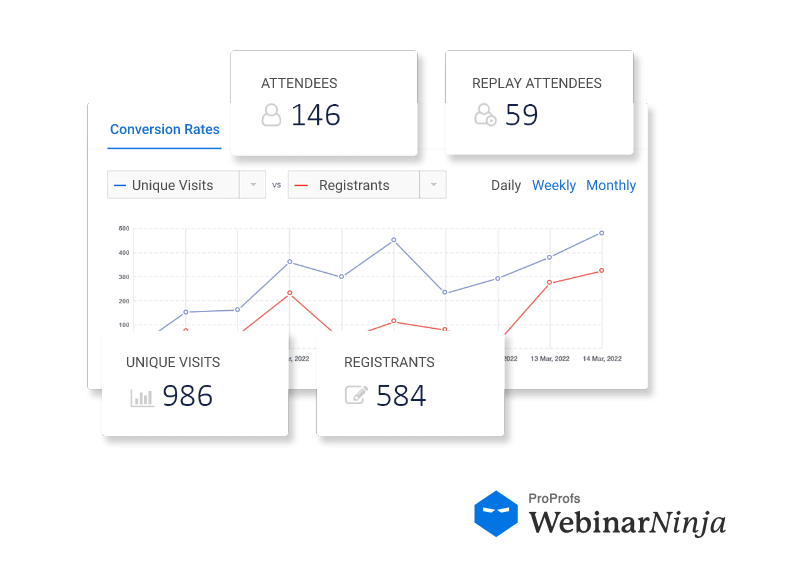
4. Tracking via Webinar Platforms
Many webinar platforms have built-in analytics that can track CTA engagement.
For instance, you can use a reliable webinar platform such as WebinarNinja that contains built-in analytics features, including real-time tracking of CTA clicks, attendee activity, and engagement levels.
5. In-Session Polls and Surveys
- Live Polls: Ask participants if they intend to take the next step (e.g., “Will you sign up for a free trial today?”). This provides direct feedback and allows you to gauge immediate interest.
- Post-Webinar Survey: Include a follow-up survey that asks participants if they took action on the CTA or plan to do so. This feedback can help refine future webinars.
6. Email Follow-Up Tracking
- Send follow-up emails to webinar participants, reiterating the CTA. Use tracking to monitor who opens the email and clicks the CTA link.
- A/B Testing: You can A/B test different CTA wording or button designs in follow-up emails to see which version performs better.
7. Conversion Tracking
- Set up conversion goals in Google Analytics or another analytics platform to track how many users who clicked on the CTA link ultimately completed the action (e.g., signing up for a demo or purchasing a product).
- Track multi-touch attribution if the CTA journey extends beyond a single step (e.g., someone clicked during the webinar but converted later after the follow-up email).
8. Heatmap and Behavior Tracking Tools
Use tools like Hotjar or Crazy Egg to analyze how participants interact with the CTA if it’s placed on a landing page that participants visit after the webinar.
9. Segmented Analysis
Compare how different segments of your audience responded to the CTA, such as new leads vs. existing customers, different demographics, or levels of engagement during the webinar.
10. Reporting and Analysis
- Quantitative metrics: Track and analyze:
- Total number of CTA clicks
- Conversion rate (clicks vs. action completed)
- CTR (Click-Through Rate) for the CTA
- Qualitative metrics: Gather feedback from participants on how relevant or persuasive they found the CTA during the webinar.
Drive Better Engagement with Irresistible Webinar CTAs
As we reach the offset, it’s more than clear that compelling CTAs for your webinars are essential to maximizing audience interaction and participation. They guide attendees towards meaningful actions, whether joining a follow-up event, downloading resources, or engaging with your brand further.
Remember, the best CTA for webinars is clear, persuasive, and aligned with your goals.
Also, you can make your CTAs much more effective with a feature-rich webinar platform like WebinarNinja, which helps you create and integrate these CTAs seamlessly. From custom CTA buttons to timed pop-ups, WebinarNinja helps you prompt attendees at the perfect moment, effortlessly boosting engagement.
Want to host a webinar for free?
Use WebinarNinja to teach, improve marketing, and grow your sales.




